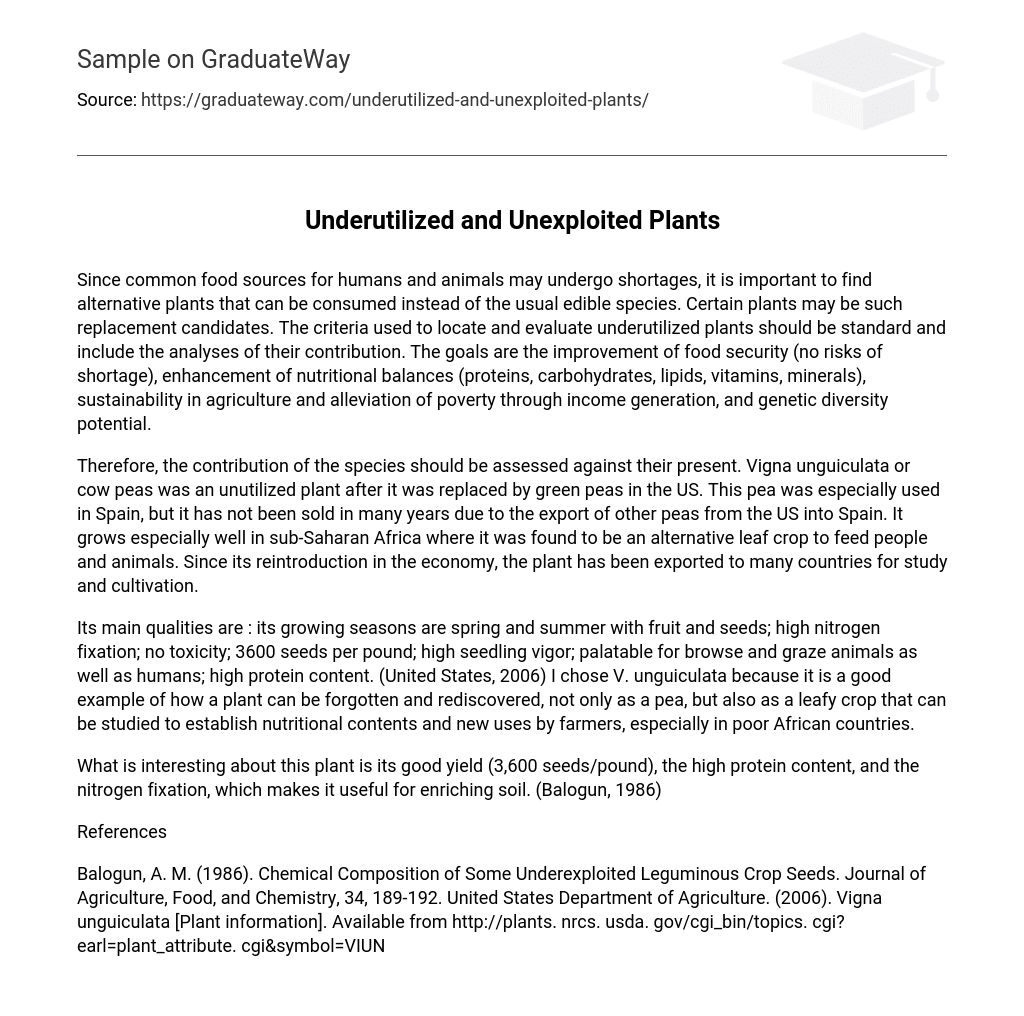Since common food sources for humans and animals may undergo shortages, it is important to find alternative plants that can be consumed instead of the usual edible species. Certain plants may be such replacement candidates. The criteria used to locate and evaluate underutilized plants should be standard and include the analyses of their contribution. The goals are the improvement of food security (no risks of shortage), enhancement of nutritional balances (proteins, carbohydrates, lipids, vitamins, minerals), sustainability in agriculture and alleviation of poverty through income generation, and genetic diversity potential.
Therefore, the contribution of the species should be assessed against their present. Vigna unguiculata or cow peas was an unutilized plant after it was replaced by green peas in the US. This pea was especially used in Spain, but it has not been sold in many years due to the export of other peas from the US into Spain. It grows especially well in sub-Saharan Africa where it was found to be an alternative leaf crop to feed people and animals. Since its reintroduction in the economy, the plant has been exported to many countries for study and cultivation.
Its main qualities are : its growing seasons are spring and summer with fruit and seeds; high nitrogen fixation; no toxicity; 3600 seeds per pound; high seedling vigor; palatable for browse and graze animals as well as humans; high protein content. (United States, 2006) I chose V. unguiculata because it is a good example of how a plant can be forgotten and rediscovered, not only as a pea, but also as a leafy crop that can be studied to establish nutritional contents and new uses by farmers, especially in poor African countries.
What is interesting about this plant is its good yield (3,600 seeds/pound), the high protein content, and the nitrogen fixation, which makes it useful for enriching soil. (Balogun, 1986)
References
Balogun, A. M. (1986). Chemical Composition of Some Underexploited Leguminous Crop Seeds. Journal of Agriculture, Food, and Chemistry, 34, 189-192. United States Department of Agriculture. (2006). Vigna unguiculata [Plant information]. Available from http://plants. nrcs. usda. gov/cgi_bin/topics. cgi? earl=plant_attribute. cgi&symbol=VIUN





